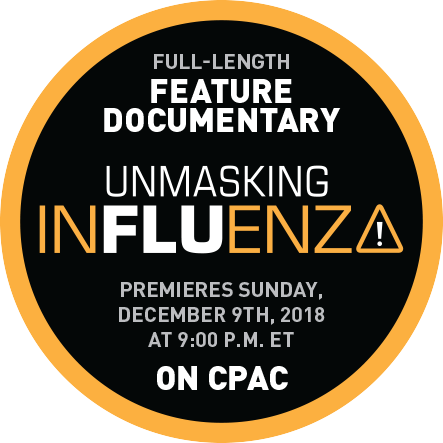 ON THE CENTENARY OF THE DEADLIEST FLU PANDEMIC THE WORLD HAS EVER EXPERIENCED, Unmasking Influenza – The 1918 Spanish Flu in Canada and preparing for the next pandemic is a commemorative educational initiative.
ON THE CENTENARY OF THE DEADLIEST FLU PANDEMIC THE WORLD HAS EVER EXPERIENCED, Unmasking Influenza – The 1918 Spanish Flu in Canada and preparing for the next pandemic is a commemorative educational initiative.
Produced by Sound Venture Productions and The Royal Canadian Geographical Society, and in collaboration with key supporting partners, Unmasking Influenza breathes new life into this global story of disease, death and tragedy—a story that has been largely forgotten…until now.
Why is the 1918 flu pandemic called the Spanish Flu?
The correct answer is:
Spain was one of the first nations to take the threat of the 1918 pandemic seriously. The international press subsequently began to refer to the outbreak as the Spanish Flu.
How many continents did the Spanish Flu spread to?
The correct answer is:
Only Antarctica was spared.
What caused the Spanish Flu?
The correct answer is:
The Spanish Flu pandemic was caused by a virus. In 1918 scientists believed bacteria caused the outbreak, as viruses were poorly understood.
Where did the word influenza come from?
The correct answer is:
Influenza is derived from the Italian word for influence. In the Middle Ages it was believed that illness came from the influence of the stars.
What percentage of the world was infected with Spanish Flu?
The correct answer is:
The majority of people who were infected survived, but almost 4% of the world’s population died from the Spanish Flu.
Who was most affected by the 1918 Spanish Flu?
The correct answer is:
Unlike typical flu pandemics which usually affect the young and the old, the 1918 pandemic struck young adults in the prime of their lives.
What were the symptoms of the Spanish Flu?
The correct answer is:
People infected with the Spanish Flu could experience some or all of the symptoms, with death usually occurring once pneumonia set in. They would die from a lack of oxygen as their lungs filled up with phlegm.
What federal government department was in charge of healthcare during the 1918 pandemic?
The correct answer is:
In 1918, health care and quarantines were still the responsibility of the Department of Agriculture. The federal Department of Health was established in 1919 as a direct result from the consequences of the Spanish Flu.
How many waves of Spanish Flu were there?
The correct answer is:
Like most flu pandemics, the Spanish Flu had three waves, with the second wave being the deadliest as it had evolved into a more powerful strain.
What drug was present in some of the cough suppressants doctors prescribed to combat the flu?
The correct answer is:
Because of the addictive properties of heroin some patients who survived the Spanish Flu become heroin addicts.
What product or service shortages took advantage of the sick and dying?
The correct answer is:
In many cities and communities in Canada, funeral parlours could not keep up with the demand. Some even exploited the situation by overcharging for their services.
During the peak of the second wave of the Spanish Flu, approximately how many Canadians were dying daily?
The correct answer is:
A significant number considering Canada’s population was a little more than 8 million in 1918.
How many times more were Indigenous Canadians likely to die from the Spanish Flu than non-Indigenous Canadians?
The correct answer is:
Indigenous people died at a much higher rate as they had not developed immunities against so called “white men’s diseases”
How many Americans died during the Spanish Flu?
The correct answer is:
In less than five weeks in Philadelphia alone, more than 12,000 people died.
How long did the Spanish Flu last?
The correct answer is:
The Spanish Flu started in the spring of 1918 and ended in the summer of 1919. In little more than a year it killed more than 50 million people worldwide and more than 50,000 Canadians.
How did the Spanish Flu end?
The correct answer is:
The flu pandemic petered out, as those that were infected either died or developed immunity
What is the difference between an epidemic and a pandemic?
The correct answer is:
An epidemic is an outbreak of a disease that is contained in one area, if it spreads globally it is considered a pandemic.
What recent pandemic is the Spanish Flu associated with?
The correct answer is:
Scientists have identified the Spanish Flu as an H1N1 strain. In 2009, the H1N1 pandemic spread through Canada and it threatened to cancel the Vancouver 2010 Winter Olympics.
How many influenza pandemics were there in the past century?
The correct answer is:
The world experienced three influenza pandemics in the 20th century — in 1918, 1957 and 1968. Scientists believe we are overdue for another.
How many people could potentially die if a pandemic the strength of the Spanish Flu spread around the world today?
The correct answer is:
Potentially more than 350 million people could die, including 186,000 Canadians









